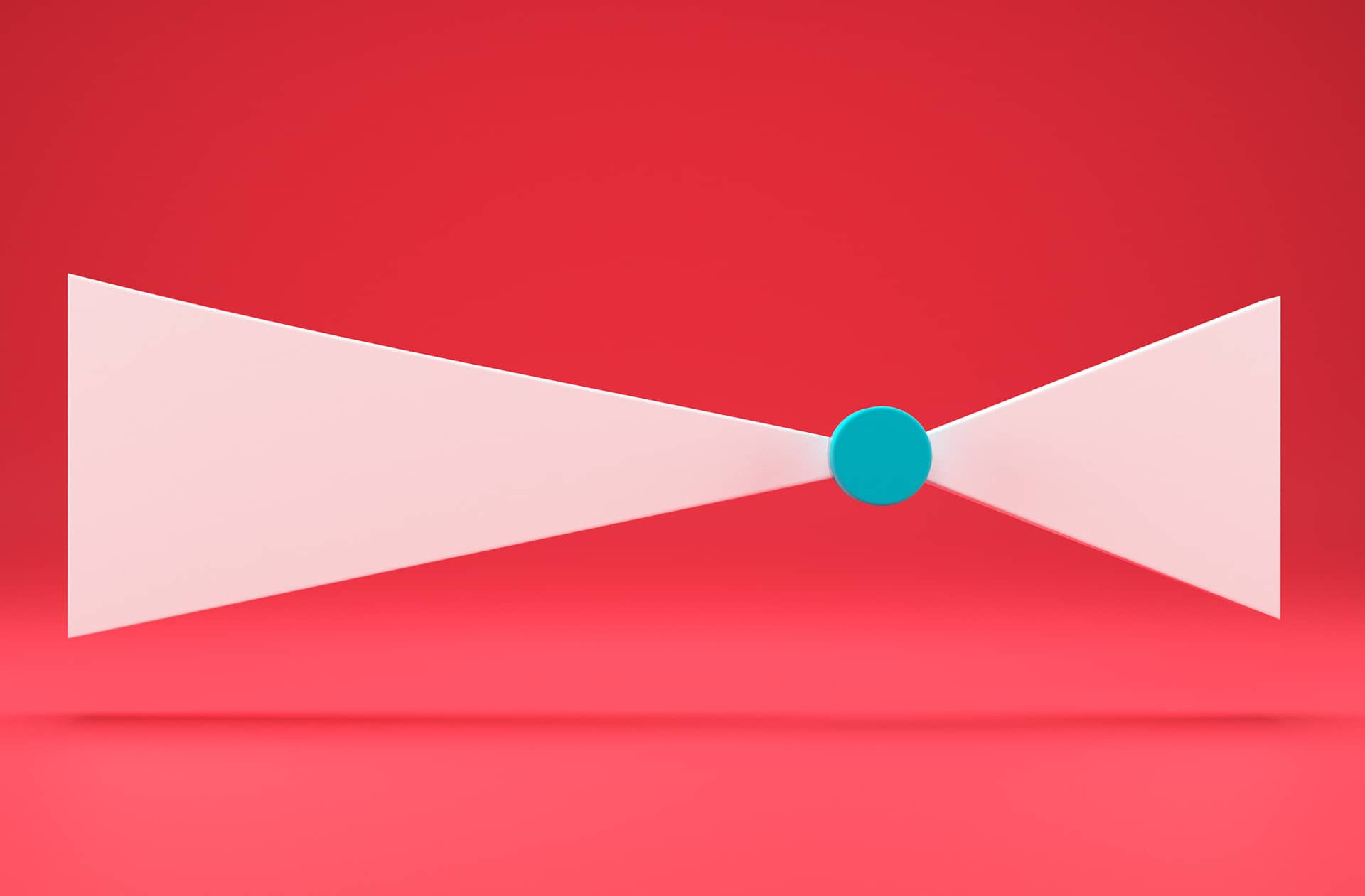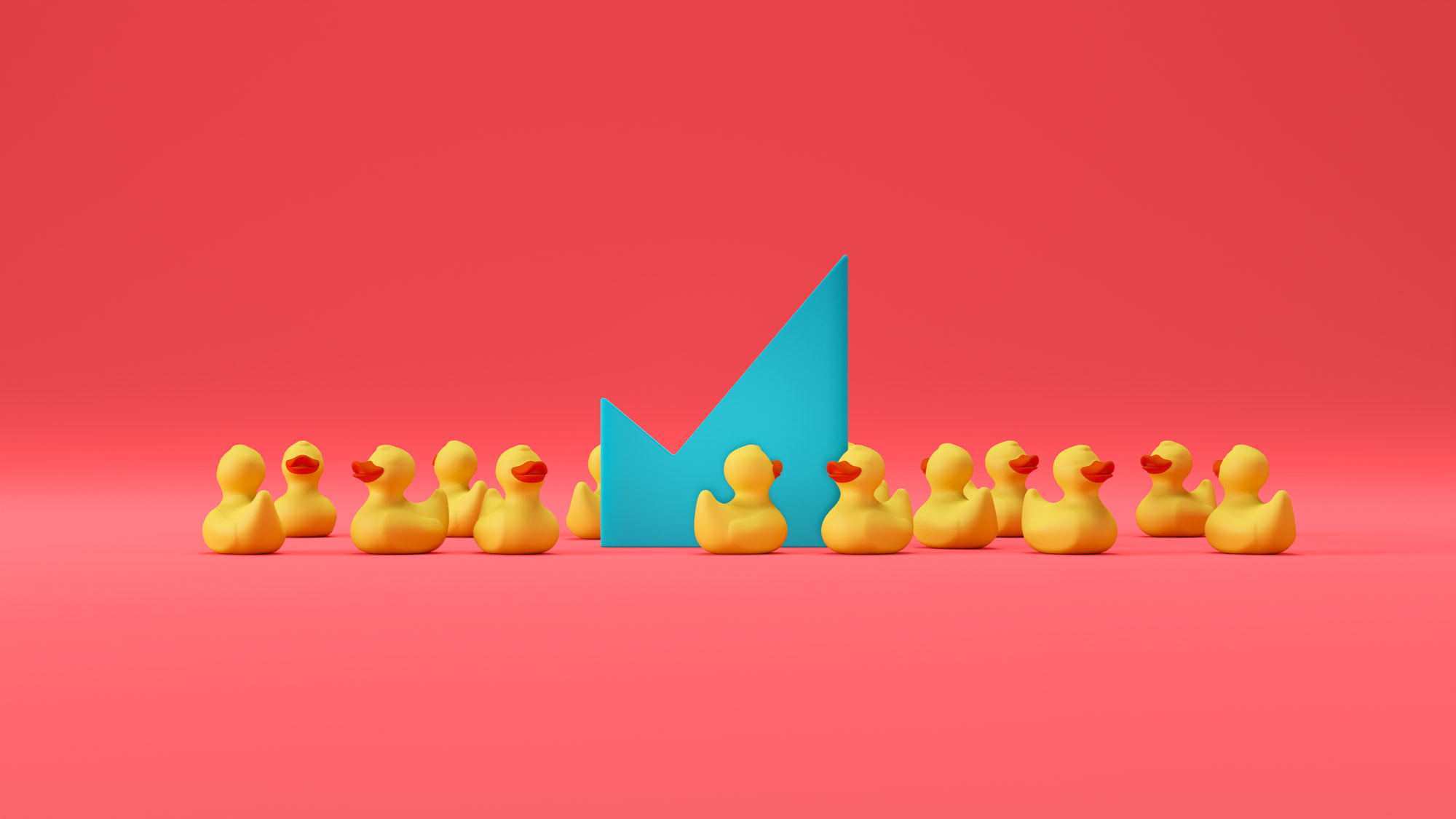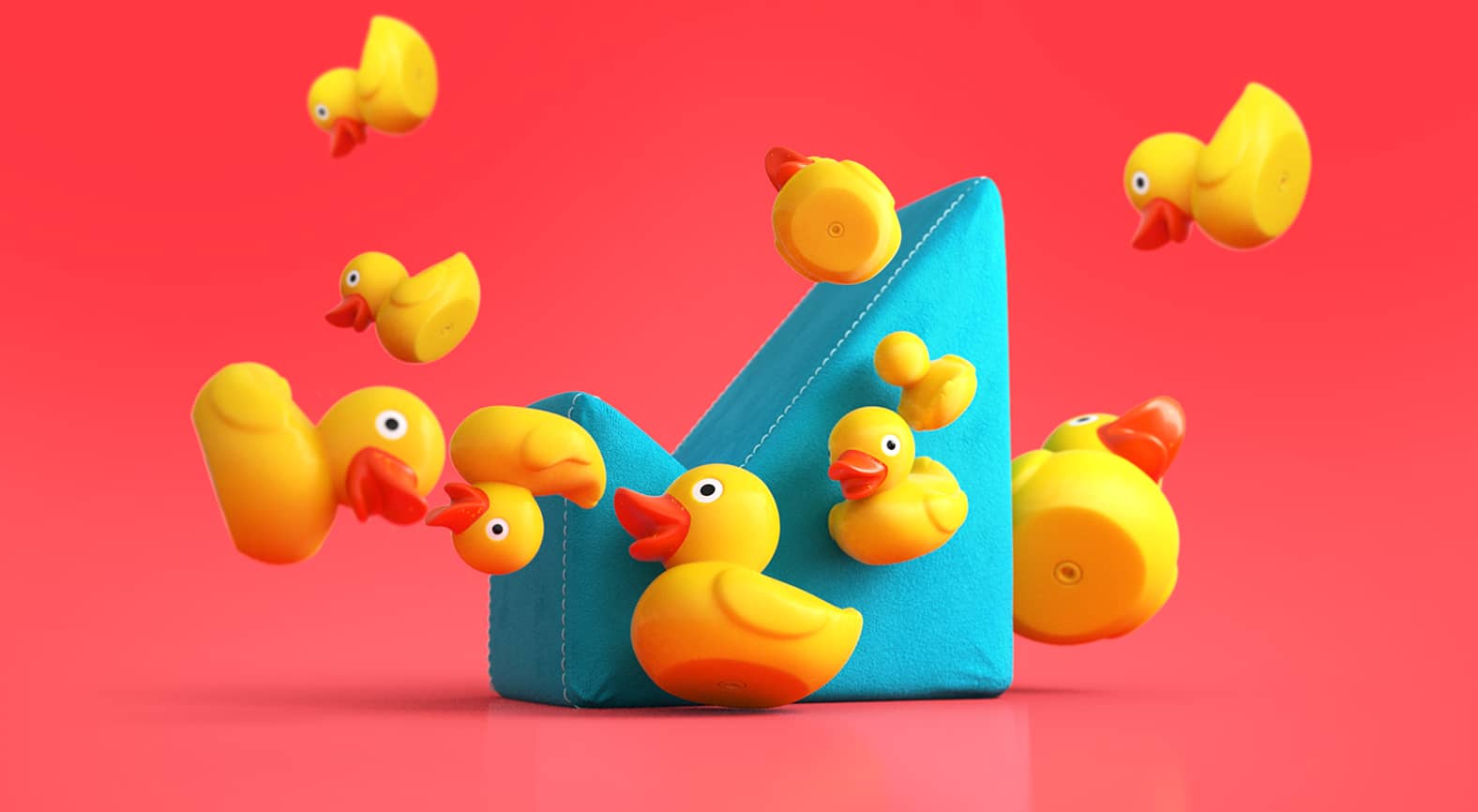The buyer’s journey is changing, driven both by an evolution of B2B business practice and changes in buying behaviour.
In the second of this series of three blogs, we’ll continue our exploration of this topic, with a review of an improved buyer’s journey that matches the needs of today’s buyer.
It’s helpful to start with some definitions.
The buyer’s journey is a framework that describes the buyer’s path to purchase. The journey starts with the potential buyer becoming aware of a potential business need and moves in stages to a decision to purchase a product or service. It’s used as a guide in various go to market activities, such as content mapping, but is best utilized to create a repeatable process to understand and support the buying process better.
The buyer’s journey typically consists of four elements:
-
The participants – a list of the members of the buying team, together with their position and buying role, usually accompanied by actionable information, such their content consumption preferences.
-
The stages of the journey – the stages of the buying process, traditionally described as awareness, consideration and decision. It is helpful to record who of the participants are involved at what particular stage
-
Timing – the timing of the stages
-
Needs – the information needed by the buying team at each of the stage so that they can move to the next stage
What are the stages of the buyer’s journey?
The traditional buyer’s journey stages of awareness, consideration and decision have been in use for many years. For SaaS vendors, a fourth stage to include renewal is vital.
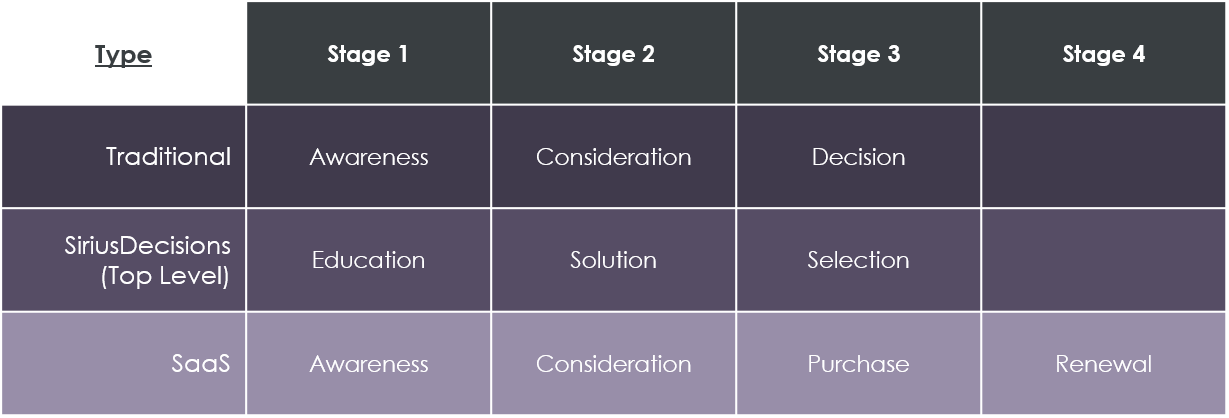
Three and Four stage buyer’s journey
In 2016 SiriusDecisions (now owned by Forrester) introduced a new buyer’s journey that had three stages at the top level but could be broken down into 6 stages, with a significantly more emphasis on behavior – such as ‘breaking the status quo’ and ‘committing to change’. It also included key buying tasks such as ‘justifying the decision’ and ‘making the selection’. This was widely adopted by many B2B Marketing organizations.
In 2020 Gartner published the ‘Big Book of Buyer Behavior’ which takes a much more buying task focused approach, on the basis that the buyer’s journey is “less of a journey than a set of buying jobs that need to be completed”. It was accompanied by research that encourages selling to the enterprise, rather than the individual, stating that vendors need to “appeal to the buying team, not the individuals on it”.
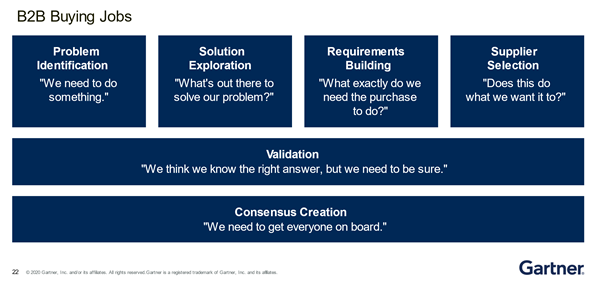
Gartner’s B2B Buying Jobs
A better buyer’s journey, combining tasks and stages
This is the most buyer centric approach to date, but clearly it breaks with the stage based approach most buyer’s journeys use, which is vital for mapping purposes in Marketing. However, it is not difficult to combine Gartner’s and SiriusDecision’s approach to build a buyer’s journey that is stage-based but also utilizes buying tasks. Here’s a sketch of what it looks like. You will see that the SiriusDecision’s idea of breaking the status quo has been preserved as an inflection point that can be shifted left or right according to need.
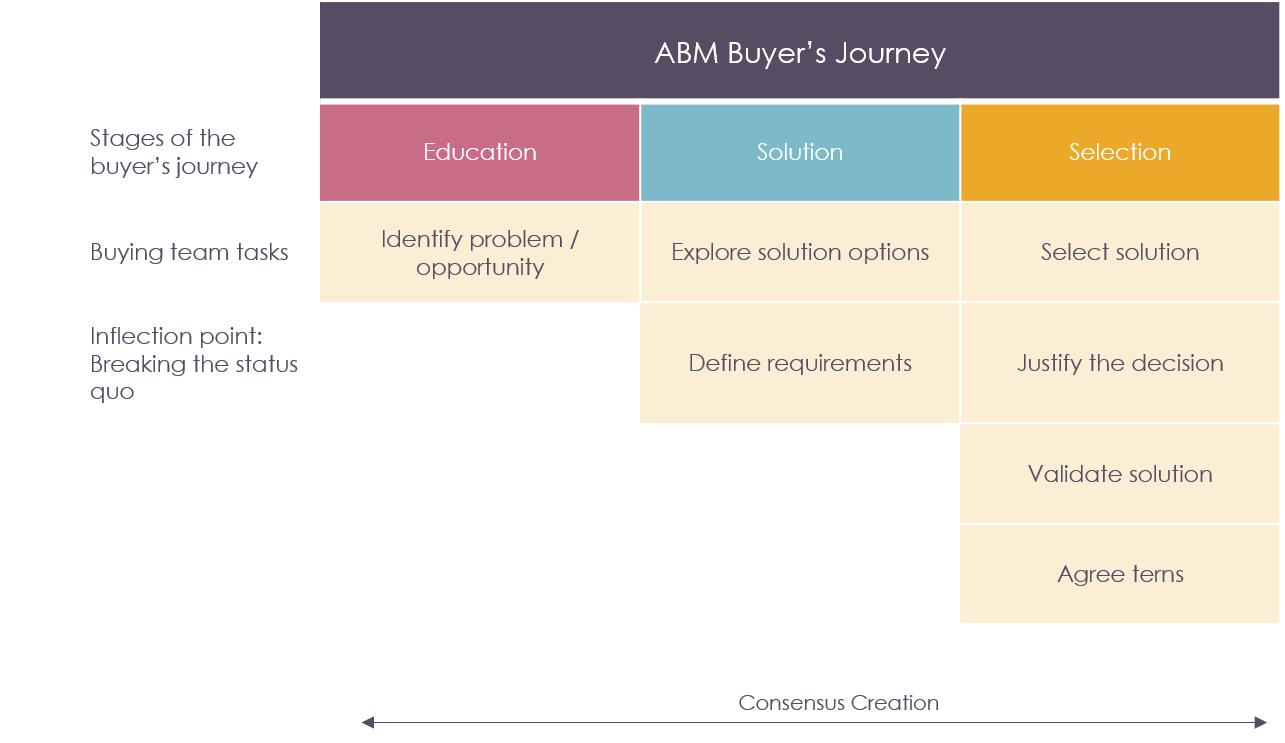
A hybrid buyer’s journey, combining tasks and stages
How do you develop the buyer’s journey?
The process for developing the buyer’s journey starts by identifying who is involved in each stage and what questions they have that will need to answer to move to the next stage. Below I’ve listed some of the key questions the buying team will need to answer in the Explore Solution Options stage:
-
Who is an expert in this area - internally or externally?
-
What are the best sources of information to help us understand the problem/opportunity better?
-
What does a good outcome look like as a solution to this problem?
-
What solution options are available to us that will address the problem/opportunity?
-
What resources do we require to explore the solution options?
-
Who needs to be involved in make this happen?
-
What does the financial envelope for a solution look like? What are our financial considerations and constraints?
-
Who has solved this problem before?
Once this is complete, the questions and their answers can be used to determine what information is needed support the buying process. The work can be conducted using workshops amongst those who have the most knowledge. The work itself isn’t that difficult – its determining who has that knowledge is usually the most difficult part of the process!
Why should you adopt and develop the buyer’s journey?
There is no doubt that developing and adopting a buyer’s journey takes work, so understanding the benefits is essential.
The first benefit is that the buyer’s journey provides a fantastic context for all the data we collect. Marketing has become increasingly data driven over the last few years, and ingests an increasingly diverse range of data sources, including third party intent, first party engagement, product engagement signals, video analytics and more – all used to analyse buyer propensity. To make use of the data effectively it is vital to align to buyer behaviour consistently. The buyer’s journey provides the context to help to interpret the increasing amount of buyer data available.
The second is that as we are increasingly at arm’s length from our prospects and customers we need to enable buyers to self-serve effectively without meeting them or even necessarily knowing who they are. This becomes extremely important in account based marketing programs due to the anonymity of many members of the wider buying team we are engaging with.
Having a defined buying process means it can be aligned with the selling process – which is particularly important for the Sales/Marketing alignment that is vital to ABM programs.
We haven’t discussed the buyer’s journey in connection with the brand, but it is obvious that focusing on supplying helpful information at each stage of the journey builds awareness and goodwill amongst the buying team and builds your brand value.
Lastly, as we discussed in the first post of this series, SaaS has taught us that identifying, and subsequently reducing or eliminating friction points in the buyer’s journey also reduces the duration of the Sales cycle.
Clearly I think these reasons are compelling, as I’ve been this process several times, but do let us know what you think. In the next post I’ll wrap up this short series with some tips on how to make best use of the buyer’s journey.
